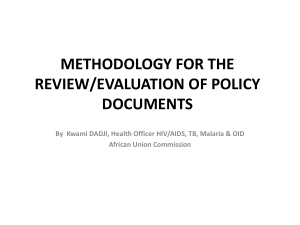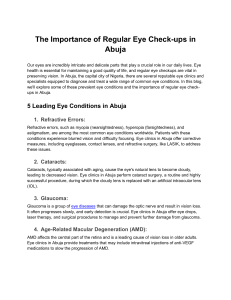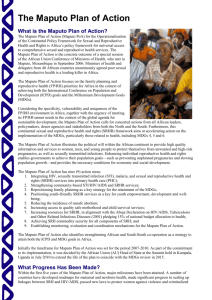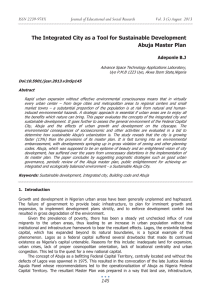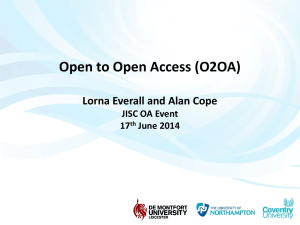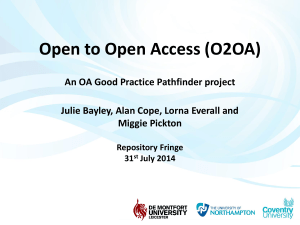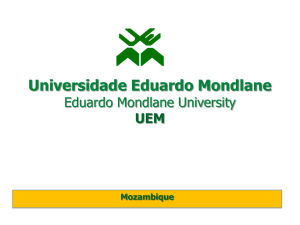Background to the Health Policy Documents of
advertisement
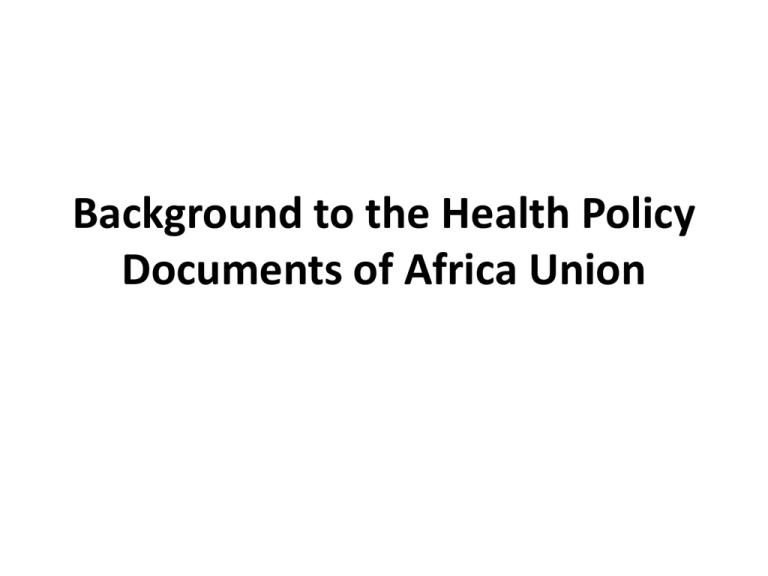
Background to the Health Policy Documents of Africa Union Presentation Outline 1. Introduction 2. Abuja Call for Acceleration Actions Towards Universal Access to HIV and AIDS, TB and Malaria Services in Africa 2006-2015 3. Maputo Plan of Action for the Operationalisation of he Continental Policy Framework for Sexual and Reproductive Health and Rights 2007-2015 4. Africa Health Strategy 2007-2015 1. Introduction • Africa = 54 countries, >1 billion people (about 14% of the global population) • 25% of the global disease burden • >50% of the global deaths of children under five • High infectious disease burden • Growing NCD • Software –HR ~ 3% of the world’s deployed– inequitably distributed, Migration. 1. Introduction • Hard ware – clinics, hospitals, labs, inadequate, Supply chain. • 1% of global healthcare expenditure • Limited National budgets • Donor dependence • Africa’s people face a huge burden of preventable and treatable health problems whose solutions are known, proportionately far beyond Africa’s share of the world’s population. • Cognisant of these challenges AU HoSG adopted the main health policy documents. 2. Abuja Call • In 2006, the AU Heads of State and Government at a Special Summit on HIV/AIDS, Tuberculosis, and Malaria in Abuja, Nigeria, from 2-4 May 2006, adopted the Abuja Call on “Universal Access to HIV/AIDS, Tuberculosis and Malaria Services by A United Africa by 2010”. • The priority areas include the following: 2. Abuja Call 1. Leadership at National, Regional and continental Levels 2. Resource Mobilization 3. Protection of Human Rights 4. Poverty Reduction, Health and Development 5. Strengthening Health Systems 6. Prevention, Treatment, Care and Support 7. Access to Affordable Medicines and Technologies 8. Research and Development 9. Implementation 10. Partnerships 11. Monitoring, Evaluation and Reporting 2. Abuja Call • Implementation: – the AUC in 2010, conducted a 5-Year review of the implementation of the Abuja Call. – The outcomes of this review, included the recommendations to extend the “Abuja Call” to 2015 to coincide with the MDGs and “the indicators of the “Abuja Call” should be reviewed and aligned to MDG 6”. – Developed the Abuja Call M&E Plan – A Progress Report on the status of implementation was done in 2013. – The report findings indicate that Member States have made substantial progress between 2010 and 2012 in certain areas, demonstrating willingness and political commitment. 3. Maputo PoA • After recognizing that African countries were unlikely to achieve the MDGs without significant improvements in the SRH the Continental Policy Framework on Sexual Reproductive Health and Rights and its Maputo Plan of Action (MPoA) were adopted. • The MPoA’s function is to operationalize the Continental Policy framework on SRHR. • Implementation of the Maputo Plan of Action was supposed to end in 2010 but was extended by the 15th Ordinary Session AU Assembly to 2015 following recommendations from the review done in the same year. 3. Maputo PoA • The following six key strategies were developed for the operationalization of the SRH Policy framework: 1. 2. 3. 4. 5. 6. Integrating STI/HIV/AIDS, and SRHR programmes and services, including reproductive cancers, to maximize the effectiveness of resource utilization and to attain a synergetic complementary of the two strategies; Repositioning family planning as an essential part of the attainment of health MDGs; Addressing the sexual and reproductive health needs of adolescents and youth as a key SRH component; Addressing unsafe abortion; Delivering quality and affordable services in order to promote Safe Motherhood, child survival, maternal, Newborn and child health. African and south-south co-operation for the attainment of ICPD and MDG goals in Africa 3. Maputo PoA • The MPOA represents Africa’s most robust collective response to the alarming rates of Maternal Mortality Rates in Africa – a highly sensitive indicator of the inequality between men and women on this continent. • Since the adoption of the Maputo Plan of Action (MPOA), some countries have: – – – – – – Increased the share of health allocations in national budgets. Created new incentives to retain health and medical personnel. Increased emphasis on emergency obstetric and neonatal care. Instituted maternal death audits in annual operational plans. Improved health management information systems. Adopted progressive gender policies. 4. Africa Health Strategy • • • In 2007, The 3rd Conference of AU Ministers of Health decided to adopt the Africa Health Strategy (AHS). The Strategy was intended to recognise that Member States and regions and indeed the continent had previously set health goals in addition to the Millennium Development Goals that they have committed to. The strategy also intended to explore some challenges that militate against the continent decreasing the burden of disease and improving development and also draws on existing opportunities. 4. Africa Health Strategy • In highlighting strategic directions in a multisectoral fashion, the AHS intended to stimulate a co-ordinated response to ensure maximum benefit from the resources mobilised and to prevent fragmentation and duplication. • It was further intended to provide an overarching framework to enable coherence within and between countries, civil society and the international community. 4. Africa Health Strategy • In approaching the end of tenure of the AHS, a review of its performance is imperative. 4. Africa Health Strategy Thank You
